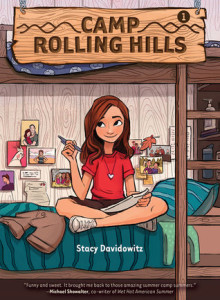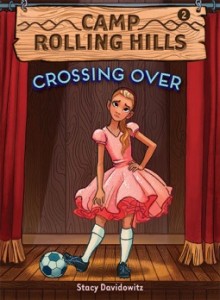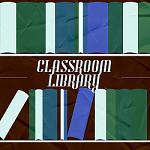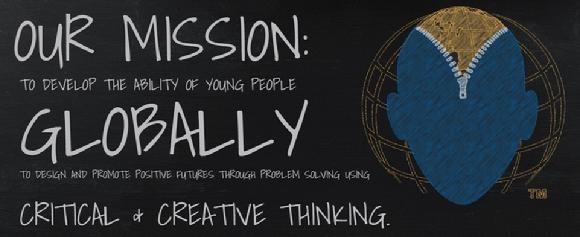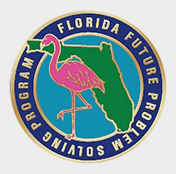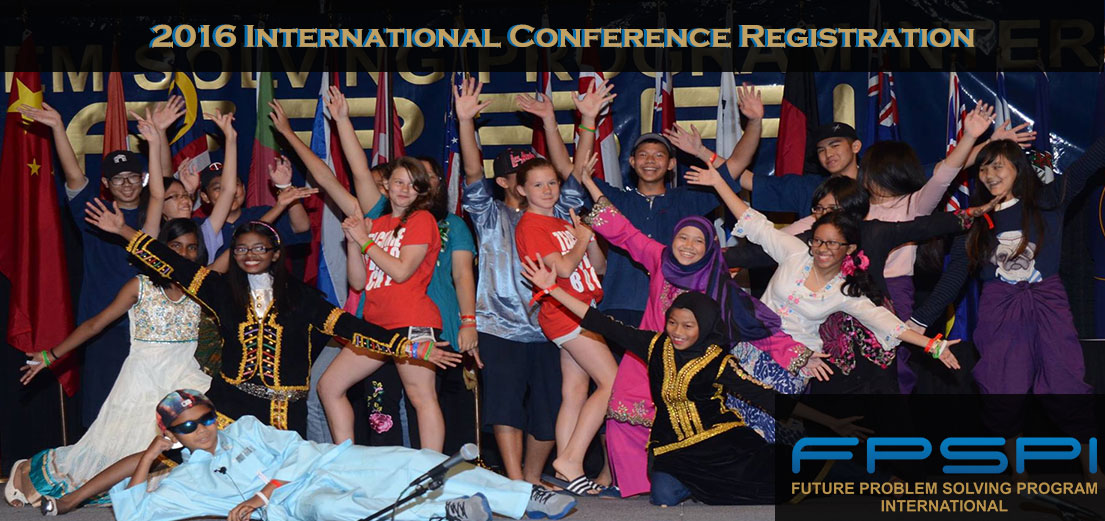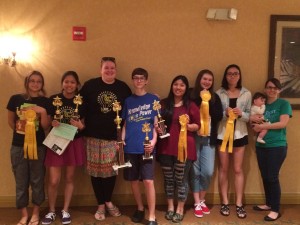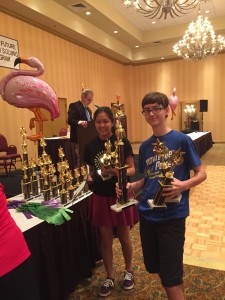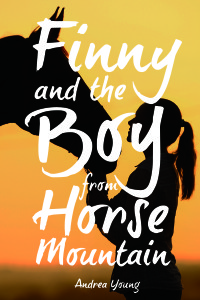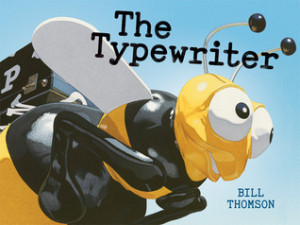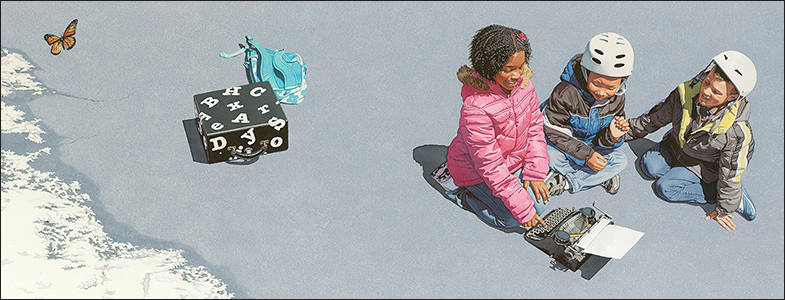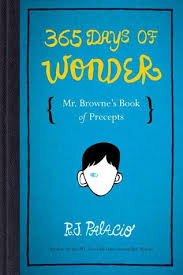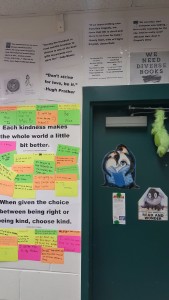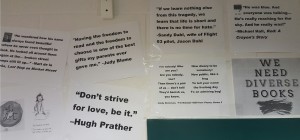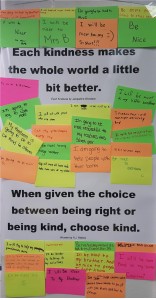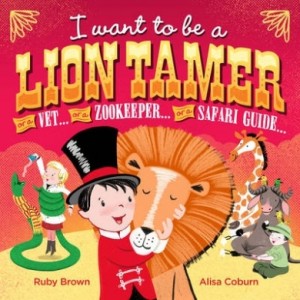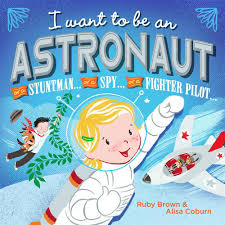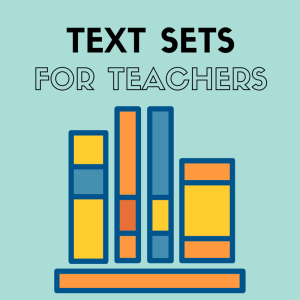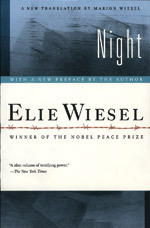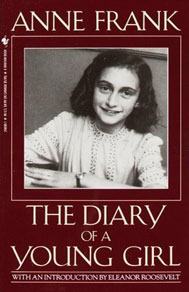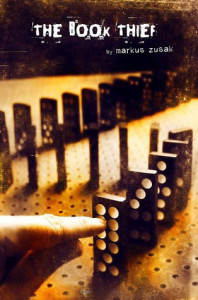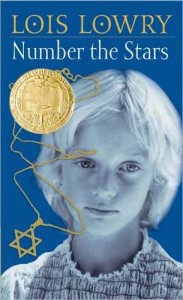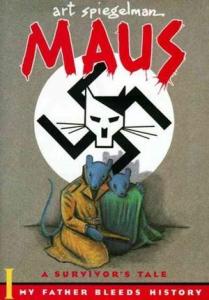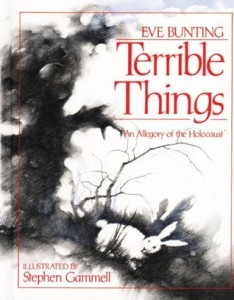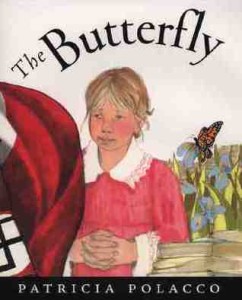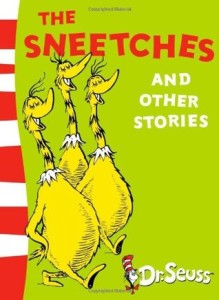Camp Rolling Hills
Camp Rolling Hills: Crossing Over
Author: Stacy Davidowitz
Published May 10th, 2016 by Amulet Paperbacks
Camp Rolling Hills’s Goodreads Summary: A hilarious and heartfelt series about the particular magic of summer camp—a place where reinvention is possible and friends are like family—from a sparkling debut talent.
Finally, it’s summer! Stephanie—aka Slimey—has been counting the days until she can return to her favorite place in the entire world, Camp Rolling Hills. And this year she’s especially happy to be back—she’ll have eight blissful weeks away from home, where life has been decidedly rocky.
New kid Bobby, on the other hand, is pretty sure he’s in for the worst summer of his life. He does not understand his weirdo cabinmates, the group singing, and the unfortunate nicknames (including his: Smelly). But he does understand Slimey, and the two soon fall in crush. This summer might not be so bad after all!
But then a fight sets off an epic, campwide, girls-versus-boys prank war. Bunks are raided! Boxer shorts are stolen! And it’s up to Slimey and Smelly to keep the peace.
Crossing Over’s Goodreads Summary: There’s only one thing Melman loves more than soccer: her summers at Camp Rolling Hills. So she’s pumped to be back—until she realizes her bunkmates have gone totally boy-crazy over the school year and plastered their cabin in pink. Pink posters, pink t-shirts…it seems that the only not-pink thing in the cabin is Melman herself. That is, until she’s given a dare in front of the entire camp: wear a pink princess dress. For Three. Whole. Days.
Steinberg’s summer gets off to a rough start, too, when his robot (usually his area of expertise) blows up during a camp-wide robotics contest. Steinberg might feel like a loser at home, but camp’s supposed to be his place to shine.
Steinberg without robots? Melman in pink? This whole summer feels turned upside down! To set things right, Steinberg and Melman team up and hatch a fail-proof plan. The plan’s secret ingredient? Hamburgers.
About the Author: Stacy Davidowitz is a camp-obsessed writer of books, plays, and screenplays. She also enjoys acting, singing, running long distances, and teaching theater all over New York City. Her alma maters are Tufts University, Columbia University, and Tyler Hill Camp. The Camp Rolling Hills series marks her debut as an author. Visit Stacy at www.stacydavidowitz.com and www.camprollinghills.com.
Author Q&A: Thank you to Stacy Davidowitz for answering some questions I had about the books and her writing!
Kellee: You share in your author’s note that your time at camp inspired these books. Can you tell us more about what inspired you, and how it directly affected the novels?
Stacy: I love camp. Truly, deeply love it. Experiencing it as a camper and then counselor and then head staff, I really got to understand its in and outs, and most importantly, the kind of positive impact it can have on a kid. So of course plots and activities and even the camp‘s layout are derived from my experiences, but also the bigger themes: friendship, being true to who you are, firsts–that’s the heart of the inspiration. I made such fantastic friends and helped nurture friendships among campers when I worked as a counselor; I experienced life-changing firsts I could never experience at home; and I learned to embrace my quirkiness with my bunkmates by my side.
Kellee: The sequel to Camp Rolling Hills is told from different perspectives than the first. Why did you decide to switch point of views? Will the next books go through the other campers’ POVs?
Stacy: When I wrote the initial draft of the first book, it was actually told from five perspectives: Slimey, Smelly, Play Dough, Jenny, and Steinberg. But when Abrams picked it up to be a series, we talked about what would work best. Ultimately we decided that each book should be told from the perspective of a different boy and girl. So Book One is Slimey and Smelly. Book Two is Melman and Steinberg. Book Three is Jenny and Play Dough. And Book Four is Missi and Wiener. If Abrams extends the series to six books, then we’ll get the perspectives of Sophie, Jamie, Totle, and Dover, too! Camp Rolling Hills is such an ensemble piece that having the series narrated by all the kids just feels right.
Kellee: You are a teacher of theater in NYC. How has your time teaching kids influenced you to want to write and want to write specifically these books?
Stacy: I teach a lot of playwriting and creative writing, even in the theater classes I lead. My students inspire me every day. Their ideas are so uninhibited. Exciting. Fresh. Alive. Honest. So of course that makes me want to do the same! It’s really cool to be able to write wacky, sweet, and adventurous characters my students can identify with. Also, writing middle grade is just so fun! Kids are smart and silly and it’s rewarding to be able to shine that light on them.
Kellee: Other than (hopeful) sequels, what’s next?
Stacy: I’m working on a dark young adult novel at the moment called Leper. I’m also co-writing a musical for Big Block Entertainment, the producers of Rock of Ages. Camp Rolling Hills the Musical (yup, it’s a musical, too!) is getting two productions this summer. One in Westport, Connecticut at Center Stage and another in NYC at New York Musical Festival (NYMF). Plus a play of mine called Sacred Water is being workshopped at Symphony Space, NYC in early July through a festival about social change!
My Review: The crazy cast of characters are what really make this book. Oh, and the reminiscing of camp. Camp really is something that is hard to explain unless you go yourself, but Stacy Davidowitz does a great job bringing the reader into Camp Rolling Hills and all of its quirkiness. And to add to the quirkiness, the characters in the books are so much fun! They are quite the mix of personalities. From stereotypical girly-girls to a cat-obsessed, sweet girl to a do gooder to a philosophical jock. Their interactions and characterization are what keep you reading the most! I also love the mix of letters home throughout the books.
Teachers’ Tools for Navigation: The Camp Rolling Hills books would be a fun way to get letter writing into the classroom conversation. First, I’d use the letters as conversation starters into characterization asking the students, “What can you tell about these characters based on their letters?” And discuss what clues the students used to figure it out. I’d then move to a RAFT (Role, Audience, Format, Topic) activity asking each student to write a letter as a made up character they were assigned. The Camp Rolling Hills website even has stationery!
Discussion Questions: Although each cabin is filled with friends, each character is quite unique. How do the characters differ? Compare?; What would your camp nickname be?; What makes camp so special?; How did the campers change between books?
Flagged Passages: “Things to Do No that I’m in Anita Hill Cabin (Upper Camp!)
- Be a good role model.
- Make a special camp collage of my friends and our inside jokes.
- Box-stitch extra lanyard key chains for Mom, since stress makes her lose her keys.
- Spend A LOT of time with my camp sister/soul sister/BFF.
Slimey had always wanted a sister, and she treasured the times she and Melman pretended they were fraternal twins separated at birth. Fraternal, because they looked nothing alike. Twins, because their birthdays were only three days apart, and they’d always understood exactly how the other felt.” (Camp Rolling Hills, p. 2)
“‘Well, how do you like camp so far?’
‘It’s fine.’
Fine? No one describes camp as fine. Amazing, incredible, life-changing, maybe. But never fine.”
‘The first time I came here,’ she offered, ‘it took me a couple of days to realize how much I loved it, but once you do, you love it forever. You’ll see.'” (Camp Rolling Hills, p. 41)
Read This If You Loved: Honor Girl by Maggie Thrash, Hidden by Helen Frost, Brain Camp by Susan Kim, Breakfast Served Anytime by Sarah Combs, Lumberjanes by Noelle Stevenson, Like Bug Juice on a Burger by Julie Sternberg
Recommended For:
**Thank you to Caitlin at Abrams for providing copies for review!!**
